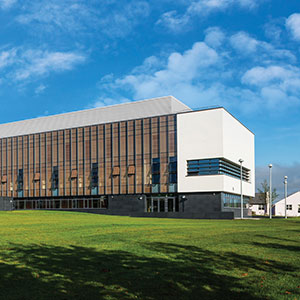-
Courses

Courses
Choosing a course is one of the most important decisions you'll ever make! View our courses and see what our students and lecturers have to say about the courses you are interested in at the links below.
-
University Life

University Life
Each year more than 4,000 choose University of Galway as their University of choice. Find out what life at University of Galway is all about here.
-
About University of Galway

About University of Galway
Since 1845, University of Galway has been sharing the highest quality teaching and research with Ireland and the world. Find out what makes our University so special – from our distinguished history to the latest news and campus developments.
-
Colleges & Schools

Colleges & Schools
University of Galway has earned international recognition as a research-led university with a commitment to top quality teaching across a range of key areas of expertise.
-
Research & Innovation

Research & Innovation
University of Galway’s vibrant research community take on some of the most pressing challenges of our times.
-
Business & Industry

Guiding Breakthrough Research at University of Galway
We explore and facilitate commercial opportunities for the research community at University of Galway, as well as facilitating industry partnership.
-
Alumni & Friends

Alumni & Friends
There are 128,000 University of Galway alumni worldwide. Stay connected to your alumni community! Join our social networks and update your details online.
-
Community Engagement

Community Engagement
At University of Galway, we believe that the best learning takes place when you apply what you learn in a real world context. That's why many of our courses include work placements or community projects.
Project Objectives
Increasing confidence in the veracity of DCPM is the ultimate aim of this research. The individual aims of the project are as follows:
- The primary aim of this project is to benchmark DCPM against MSN_WQ to establish the strengths of each model. This process of benchmarking is vital in order to build confidence in the capabilities of DCPM in advance of the widespread application of the model to transitional waters in preparation for the 2nd cycle of river basin management planning in Ireland.
- A number of measures will be taken to improve the suitability of DCPM to Irish waters such as considering the influence of residence time and nutrient release from sediment. By subdividing water bodies on the basis of residence time and applying DCPM to the adjoining segments of the water body, DCPM results will be generated at a higher spatial resolution.
- To facilitate benchmarking, the MSN_WQ model will be modified to incorporate macroalgae growth alongside phytoplankton growth to comprehensively describe the consequences of eutrophication.
- The nutrient load reductions required to restore receiving waters to good environmental status will be specified for three transitional-coastal systems where opportunistic macroalgae presents a recurrent threat to good environmental status.
- Previous research into the quantification of nutrient release from sediment will be incorporated into the DCPM model, thus enhancing the applicability of the model to Irish waters and the authenticity of nutrient load estimates.















